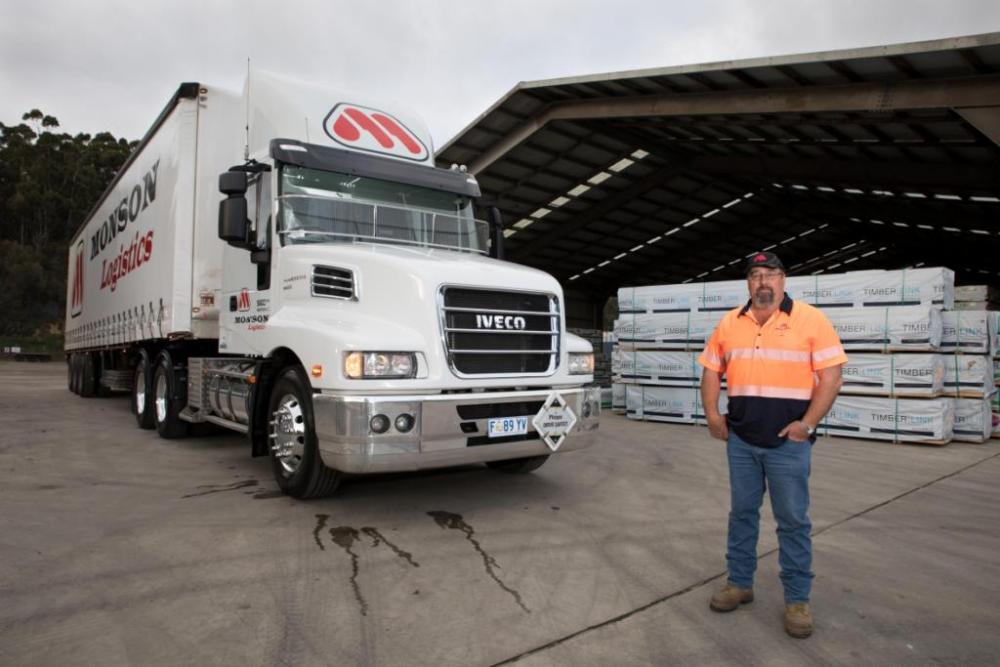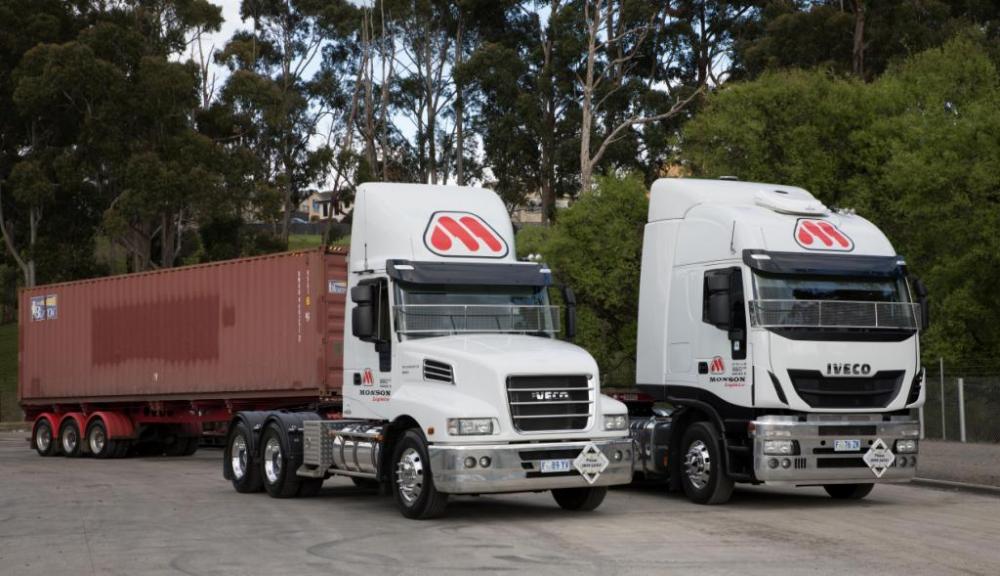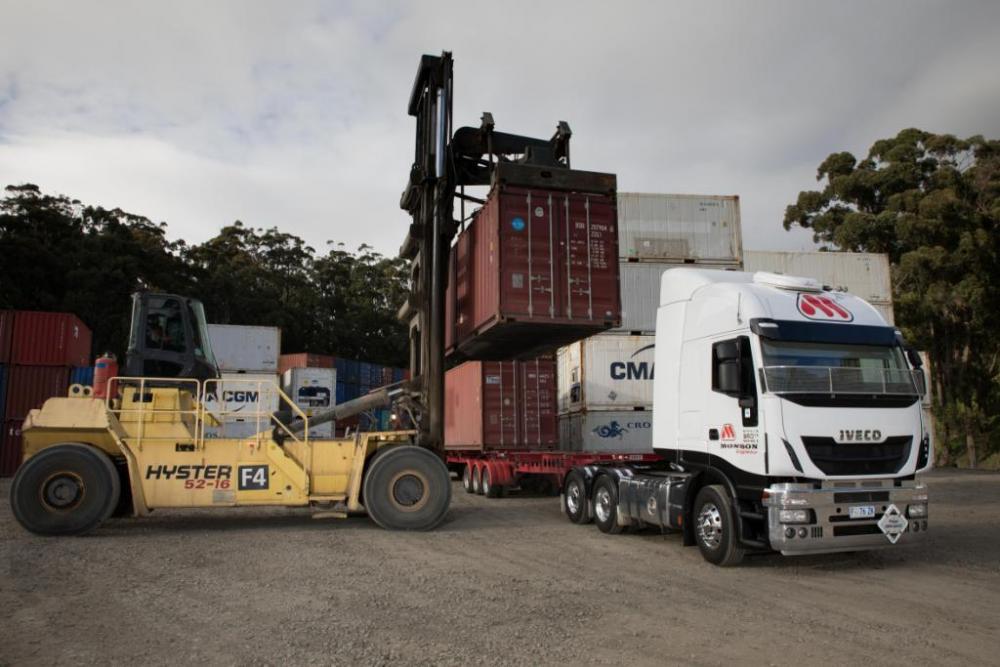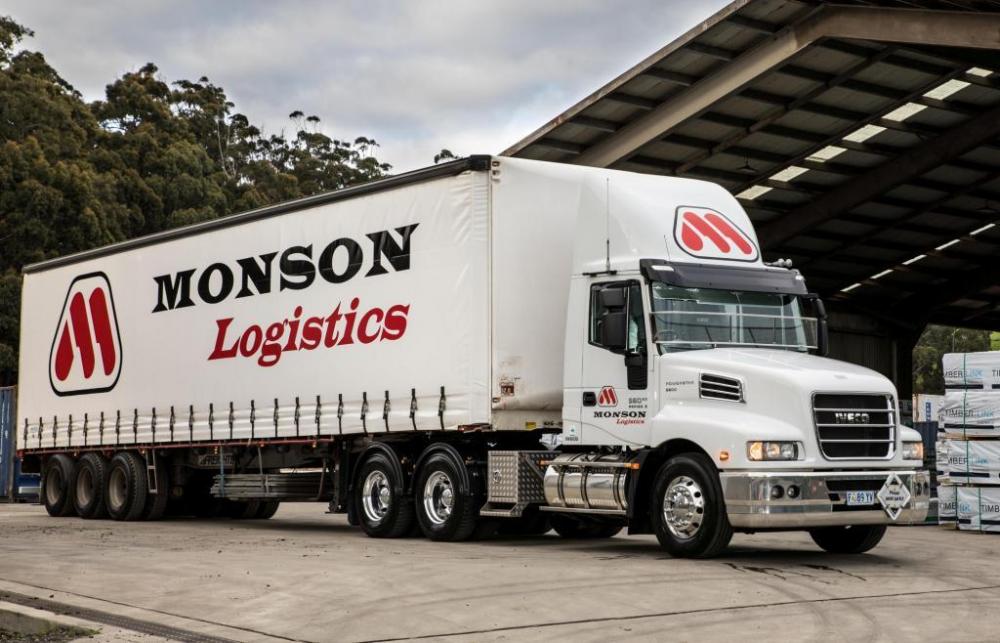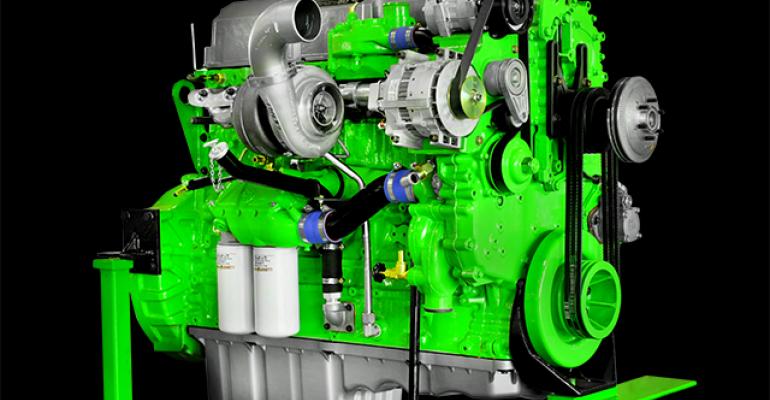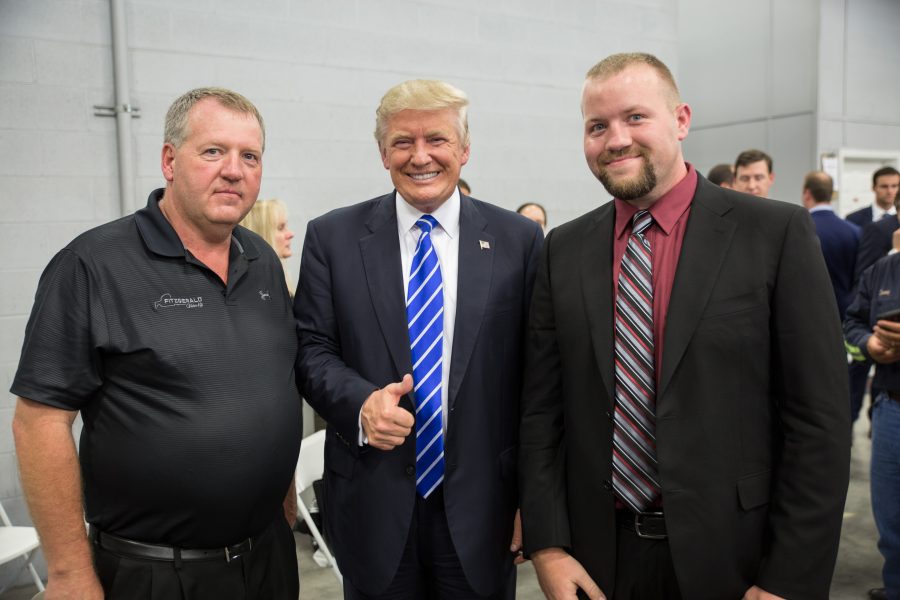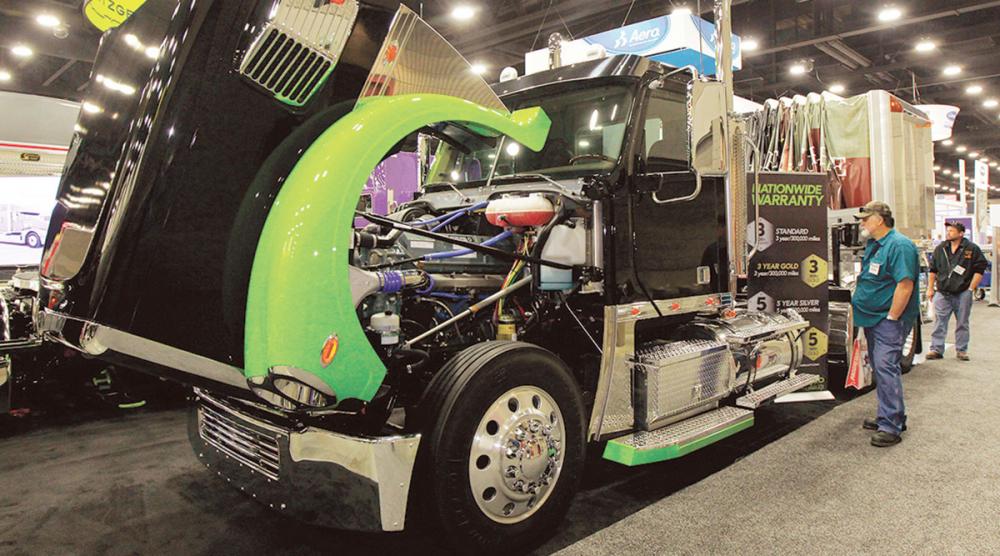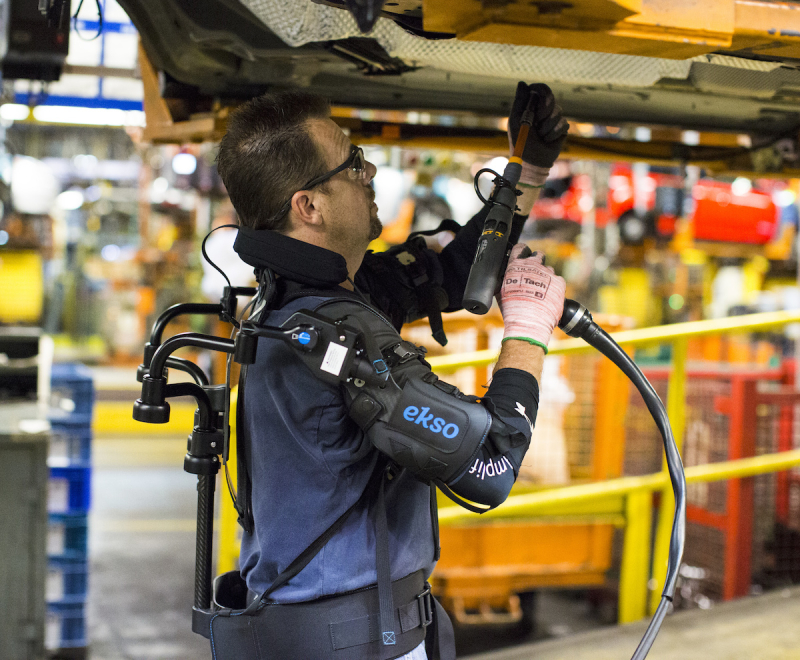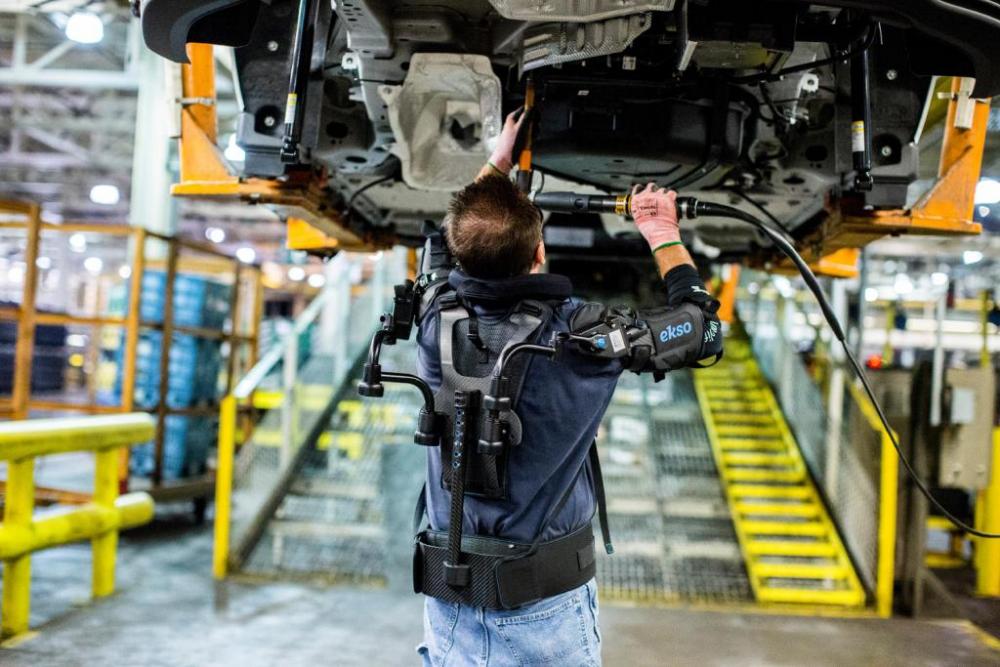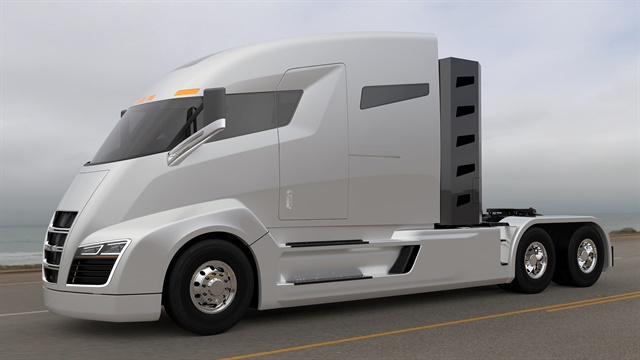
kscarbel2
Moderator-
Posts
18,886 -
Joined
-
Days Won
114
Content Type
Profiles
Forums
Gallery
Events
Blogs
BMT Wiki
Collections
Store
Everything posted by kscarbel2
-
I myself have never met an arrogant person at IVECO, and I know a great many of their engineers and global sales people. They're generally very laid back versus the Germans, French and Swedes. They're passionately serious about the truck business, but friendly as can be. The Cursor 10 didn't cool well but the Cursor 11 is great. I agree they have a superb engine line-up today. Everything is Oz is expensive. The US market $1000 Sony flatscreen cost twice that in Oz. The out-of-control cost of living in Oz really disturbs me, and the government never wants to talk about it. Volvo is one of the worst on parts pricing. They love their "margins". But that said, US car dealers many years ago started charging walk-in customers "List plus a percentage", and I thought that was disgustingly greedy. Finally, the truck dealers started doing that as well. And then you have Volvo, who charges $15 for an AC belt that the former Mack Trucks only charged $4.80 for to the non-fleet individual walk-in customer. Gates didn't raise their price two-fold.....it's Volvo's application of their global market stick-it-to-you parts pricing policy. I myself don't believe it suits the US market. I disturbed Volvo one time when I asked why a plain steel bumper for an FM cost US$2000 while a standard Mack R-model bumper (24QL4284P5) was under $300 (B-price level, the non-fleet individual walk-in customer).
-
"Mack" by John Montville
kscarbel2 replied to Lmackattack's topic in Antique and Classic Mack Trucks General Discussion
The Organization behind the Product When the internal combustion engine was rapidly developing from an experiment into a practical power plant, the Mack Brothers applied it for the first time in America to commercial highway transportation. The manufacturers of the present-day Mack are the oldest builders of motor trucks in America. For some time prior to the production of the first Mack, Adolph Saurer, of Arbon, Switzerland, had been making motor trucks in Europe. The Saurer has long been recognized as the finest of European motor trucks and is still being manufactured in Switzerland, France, Germany and Austria through its original founder. The first Saurer was built in 1894. Shortly after the Mack truck had established itself in the American market, the Hewitt Motor Company was founded by Edward R. Hewitt, an engineer of international fame. The first Hewitt light delivery truck was delivered in 1901, and the first 5-ton truck was delivered in 1905. The largest motor trucks ever marketed in America were the 10-ton Hewitts. A consolidation of Mack Brothers, Saurer and Hewitt was brought about for the purpose of combining the best features of their respective products in the manufacture of a finer motor truck than existed at that time. All of these vehicles were pioneers in their field and had long records of service behind them, both in America and abroad. By combining the outstanding features of these three trucks, and applying the same engineering genius and skill, the modern Mack truck has been evolved. The company now building the Mack truck was incorporated as the International Motor Company in October, 1911. More than one-third of the employees at the time of the consolidation are still with the present company. https://www.bigmacktrucks.com/topic/39989-mack-rail-–-the-rail-cars/?tab=comments#comment-289625 -
IVECO Trucks Australia / November 9, 2017 Leading Tasmanian freight company Monson Logistics, has invested in three new Australian-made Stralis and Powerstar models, bringing the total number of IVECOs in the company to 32. The latest acquisitions, a Powerstar 6400 and two Series II Stralis AS-L prime movers operate in B-Double applications hauling containerised freight and plantation-sourced, pre-packaged timber all over Tasmania and to port in preparation for shipment to the mainland. The new vehicles all feature IVECO 13 litre Cursor engines producing 560 hp and 2300 Nm of torque and are teamed to 16-speed Eurotronic II automated manual transmissions. Monson Logistics Maintenance Manager, Heath Calvert, said the first of the company’s Stralis models were purchased around 12 years ago and have delivered excellent service, now showing up to 1.3 million kilometres. “We’ve got around five of the earlier Stralis models that have done well over a million kilometres, for the most part they’ve worked hard, usually operating at 68 tonnes all over the state – the conditions are demanding with a lot of undulating roads,” Heath said. “It might be a small state but our drivers are still covering around 900 kilometres per day. “The Cursor engine and AMT combination is very serviceable, it’s a combination that has worked well for us – the IVECOs make up 32 of our 34 trucks on fleet and most have this specification.” For town work, Monson Logistics opt for Stralis ATi variants at 460 hp along with 500hp Stralis AD models. “We try and closely tailor the specification of the trucks to the application, and for localised town work the ATi is a good choice. It still has plenty of power for single trailer work but is also smaller and more manoeuvrable on the city streets,” Heath said. According to Heath, fleet downtime is kept to a minimum thanks to IVECO’s long service intervals, but as a back-up the company keeps a spare prime mover at each depot just in case it’s required. “The IVECO’s have 80,000 kilometre service intervals and we can even go longer if we need to,” he said. “Having said this, we also participate in Trucksafe Accreditation which sees the trucks being checked over every 20,000 kilometres for safety defects. “We also have additional trucks available that are not used on a regular basis – for the little money you get when selling a 10-year-old truck, you may as well hang on to them.” Aside from their low cost of ownership and reliability, Heath said the trucks are well regarded by the drivers, especially for their roominess and comfort. “We have a couple of other brand trucks on fleet that were inherited from business acquisitions, from time to time drivers of the IVECOs might have to use them but they’re always very happy to get back into their Stralis or Powerstar,” he said. “Overall the IVECOs have been great, we’ve had a fantastic run out of them and we’ve been very well supported by the selling Dealer Adtrans Truck Centre in Melbourne as well as WB Truck ‘n’ Trailer, Denny Mechanical and C&I Transport in Tasmania where we get our servicing done. “We’re running a business and the IVECOs look smart on the road, are very serviceable and provide good value – we’ve positively referred the brand to other local transport companies.” Having enjoyed organic growth for the last several years, Heath said business for Monson Logistics has been good, with the company’s staff now numbering 65. “As Monson Logistics continues to expand, we will have no hesitation in looking to IVECO to supply us with additional vehicles,” he said. .
-
Scania Group Press Release / November 10, 2017 The Dutch tanker haulage company Meijndert International is a pioneer in operating Liquid Natural Gas (LNG) tractor unit trucks. Owner Rien Meijndert is now looking forward to the increased power with the newly launched Scania 13-litre gas engine. “The 9-litre engine truck that we now use is slightly underpowered for our operations,” he says. “At that time we had no other option. The new engine will be more in line with our 410 hp diesel engines. We think that this will make a big difference in the usability and switching to LNG will be simpler.” Started out with one truck After resigning as a director of a truck haulage company, Rien Meijndert started out with one truck, that he drove himself. He has gradually expanded the business and now operates a large all-tanker fleet. “We’ve experienced quite a large growth and the company keeps on growing We’ve gone from a single truck ten years ago and will have 45 trucks at the beginning of next year. That’s big!” He started the business as the financial crisis was crippling the world and chemical producers were looking to cut costs and willing to bet on the newcomer. To further spread the message, his drivers appealingly customised the trucks, winning several trophies at trucking festivals. These days, the business is well-established. Rien Meijndert and the several members of his family that work for the company are now more concerned about how the retain the small-business atmosphere. Perhaps, he says, future growth will be slower. “One of the major advantages of being a small company is that everyone knows what needs to be done. This results in higher service and a better quality level than the bigger companies usually can offer.” Saving time and money The tanker trucks are operated in 500–600 kilometre radius covering Benelux, western Germany, northern France and the UK. Meijndert has its own tanker trailers and with recurrent customers and consistent deliveries of the same chemical products, saving time and money by not having to clean tanks. “Transporting dangerous goods involves many other aspects compared with normal transport. Training drivers is very important and maintaining the trucks also plays a big role. We need to uphold safety awareness among all those involved, including our suppliers. Mistakes can have a big impact.” Only operates Scania trucks Meijndert International only operates Scania trucks – including current and new generation R 410 as well as R 620 V8 trucks – with the slight exception of the owner’s pet 1981 U.S. Peterbilt that is his Sunday workshop hobby. Each of Meijndert International’s 40 drivers operate a given truck during the eight years before it is traded in. Bart Mouritz is the dedicated driver of the LNG truck. “I now have some experience with this truck and I like it very much,” he says. “It’s very smooth with good torque. My only remark is that it occasionally lacks in power but the coming 410 hp version will be great for our operations.” .
-
Scania Group Press Release / November 9, 2017 Scania's solid record of outstanding fuel economy, proven reliability and high uptime vouches for unequalled operating economy for displacement vessels. Furthermore, the prompt engine response and uncompromising low-rev performance enhances acceleration and simplifies manoeuvring. So, if you really want to push the limits of endurance and productivity, go for nothing less than diesel engines from Scania. The masters of operating economy. .
-
Volvo Trucks Press Release / November 7, 2017 The aim is to reduce accidents in which a truck drives into the back of a vehicle in front of the truck, an accident scenario that accounts for about one-fifth of all road accidents involving trucks. As of November 2015 there is an EU-wide legal requirement for new two- and three-axle heavy trucks to be equipped with the function automatic emergency brake. At present, legislation requires that the emergency braking system must reduce the trucks speed by 10 km/h. Next year, this will be tightened to 20 km/h. Volvo Trucks has developed a system that goes well beyond both current and future legal requirements. The emergency brake is only used if it is absolutely necessary, and it is deployed extremely quickly. The braking speed – or retardation to use the correct technical term – is about 7 m/sec2, which is on par with what many passenger cars can manage. In practice this means that the truck’s speed can be cut from 80 to 0 km/h in about 40 metres. .
-
Discover Renault Trucks T for long haul transport
kscarbel2 replied to kscarbel2's topic in Trucking News
-
US Proposes Freezing Mexican Trucks Out of New NAFTA Transport Topics / November 9, 2017 The U.S. has proposed another difficult change to the North American Free Trade Agreement (NAFTA) that could eventually prevent long-haul Mexican truckers from operating in the country. American negotiators have asked to remove Mexico’s long-haul industry from a NAFTA chapter on cross-border services. That could open the door to restrictions on truckers, as losing NAFTA trade protections and advantages would make it harder for Mexico to challenge any future U.S. requirements on trucks such as new safety checks. A government official described it as a broad industry exclusion that came during the last round of talks in October. The U.S. Trade Representative’s office refused to comment, and hasn’t made its proposals public. Reuters also reported last month that the U.S. was seeking fresh restrictions on long-haul trucks from Mexico. The U.S. for years after NAFTA came into effect resisted giving Mexican truckers the right to operate throughout the country. They were limited to bringing loads a short distance into the U.S., where they would be transferred to American outfits for final delivery. A dispute resolution panel backed Mexico on the matter in 2001, though the U.S. didn’t comply for years. Mexico at one point imposed tariffs in retaliation. It wasn’t until 2015 that the U.S. gave licensed Mexican truckers the right to haul cargo throughout the nation. Contentious Demands The U.S. proposal to exclude Mexican trucking adds to a list of contentious demands that President Donald Trump’s team has signaled must be met to keep the 1994 pact alive. The U.S. has also asked to scrap a dispute mechanism that is essential to Canada, the third party to NAFTA, and to tighten local content rules for cars. Negotiators have already said they will extend talks through March 2018, which is longer than originally anticipated and could bring the issue into Mexico’s presidential campaign season and U.S. congressional elections. The next round of discussions is in Mexico City this month. Mexico’s government opposes the new proposal on trucking, seeing it as a rollback of the rights won in the previous cross-border trucking dispute settlement, according to a person familiar with the position. Mexican Economy Minister Ildefonso Guajardo has said the government opposes anything that would weaken current market access under NAFTA. ‘Not Surprising’ “It’s not surprising that this is being discussed, especially in view of the history of Washington’s policy approach toward Mexican trucks crossing the border,” said Stephen Laskowski, president of the Canadian Trucking Alliance, or CTA. Laskowski said he hasn’t seen a specific proposal on the matter, and the trucking industries in all three nations are working together to see NAFTA improved. The American Trucking Associations, in a joint statement last month with the CTA and Mexico’s main trucking lobby group, said that NAFTA benefits the three countries. On the other side of the debate, the International Brotherhood of Teamsters, a labor union, argues cross-border trucking takes away American jobs and creates safety risks. Teamsters President Jim Hoffa suggested the U.S. was backing his view during the last round of talks. “The Teamsters and our allies among independent truckers and highway safety advocates will be pleased with the U.S. position on cross-border services,” he said in a statement in mid-October.
-
You and I both know your remark is dead on Mark. Now tell them how much you paid, the year, and what it's depreciated to already.
-
The mosque is Belgium’s biggest. Officials say it’s a hotbed for extremism The Washington Post / November 10, 2017 BRUSSELS — The Grand Mosque of Brussels is Belgium’s biggest and oldest site of Muslim worship. Officials in Belgium say it is also a hotbed for Saudi-backed Islamist extremism. Now the Parliament wants the country’s leaders to take over the sprawling complex that is just steps from the gleaming core of the European Union. It is the latest attempt to tighten security after radicalized Belgians emerged at the heart of terrorist attacks in Paris and Brussels in the last three years. The sudden move against the mosque underscores the challenge for Western European leaders seeking to embrace what they call a “European Islam” that endorses pluralistic values. For too long, many officials say, they have stood by as imams preaching the ultraconservative interpretation of Islam favored by clerics in Saudi Arabia and Qatar have worked among their populations, encouraging the frustrated descendants of North African immigrants to wall themselves off from mainstream society. But the very same crackdown on the mosque puts Belgian policymakers in the unusual position of picking and choosing among strains of Islam in the name of protecting freedom of religion and democracy. The dilemma has grown more pressing after Europe was struck repeatedly by Islamic State-inspired terror, often perpetrated by disgruntled citizens born inside the countries they have targeted. The mosque’s leaders “are trying to live in their splendid isolation with a radical point of view, and their aim is not to integrate into our society. And that is a big problem,” said Servais Verherstraeten, one of the leaders of a Belgian parliamentary commission that recommended last month that the government break the Saudi government’s 99-year rent-free lease on the mosque. The lease was handed to Saudi King Faisal in 1969 as a goodwill gesture [???] by Belgian King Baudouin. “We want in Belgium an Islam practiced by people who respect our constitution, who want to integrate into our country,” Verherstraeten said. “There is the perception that there is something to hide in the most important mosque in the country.” Leaders of the mosque and community center, which is run by the Mecca-based World Muslim League, deny that they espouse a conservative vision of Islam and say that they are working to improve openness. “I don’t see any contradiction between what we’re trying to do and European Islam,” said Tamer Abou El Saod, the executive director of the Islamic and Cultural Center of Belgium, which oversees the mosque. Abou El Saod, a polyglot Swedish businessman, swooped in to run the center at the end of May after his predecessor upset the parliamentary commission with halting testimony at a hearing. Several lawmakers publicly questioned what he was covering up. That former director was a replacement in 2012 for a director who was quietly asked to leave Belgium after authorities said he advocated radical ideology. “We can admit that we had some internal management issues,” said Abou El Saod, who described himself as someone who was sent in to fix problems. “This place has maybe not been communicating enough in Belgium.” “An imam who talks to people here has to be different from one in Oman,” he said in an interview in his office at the mosque, where photographs of Mecca adorn the walls along with blurry likenesses of the old Belgian and Saudi kings. The Saudi lease is unusual but not unique. The Saudi government operates an Islamic school near Washington Dulles International Airport [???], for example, and it helps fund mosques and imams around the world. Belgian counterterrorism officials acknowledge that a move against the crowded mosque will do little to stem radicalization that more often comes over the Internet or on the street, and they say they have no evidence that its imams have advocated violence or lawbreaking. But they also say they were mistaken to adopt a live-and-let-live attitude to the squat, plain concrete mosque tucked in the corner of the central Brussels’s CinquantenairePark, across the street from apartment buildings and the boxy office block that holds the E.U. diplomatic headquarters. On Fridays, worshipers spill from prayers and mix with joggers and suited bureaucrats taking strolls along the park’s manicured paths. In the half-century since the Saudi government took over the site, Belgian authorities say the mosque has espoused the hard-line interpretation of Islam favored in the conservative Gulf monarchy. That has undermined an effort originally intended to help serve Belgium’s then-growing Moroccan and Turkish guest-worker communities. The center is Belgium’s main hub for conversions to Islam, and its religious and Arabic-language schools teach 850 pupils. The Belgian move came at the same time the newly-named Saudi crown prince, Mohammed bin Salman, announced in Riyadh that he wanted to fight extremist interpretations of Islam. Belgium’s migration agency is also trying [trying???] to expel the mosque’s top imam, an Egyptian cleric who is accused of preaching an ultraconservative vision of Islam to his flock during his 13 years in Belgium. The reassessment came after the March 2016 attacks on the Brussels airport and subway that killed 32. Those attacks were led by Belgians with Moroccan roots. They are not believed to have ties to the mosque, but the violence disturbed Belgian security services and led to a broad rethinking of their strategy. Although the Saudi government is the leading funder of the World Muslim Leader, which operates the mosque, the group is independent and more than 50 other Muslim nations also contribute to its operations. The league’s top leader, Secretary General Muhammad Al-Issa, was Saudi justice minister until last year. The mosque’s longtime imam, Abdelhadi Sewif, said that he is mystified that the Belgian state is attempting to expel him and his family by refusing to renew their residence permits. He is appealing the decision, and joked that his trim beard was too short and his floor-scraping robe too long to satisfy radicals. In an interview, Sewif said that he had always advocated a moderate form of Islam, and that he never called Muslims to cut themselves off from mainstream society, as Belgian authorities have accused him of doing. He said he was searching his past words for what had made him a target. Authorities have not let him see the evidence against him. “When I tell Muslims that Muslims love their Muslim brothers and have to help each other, does this then mean you should hate the rest?” he said. “I have always fought violence and spoken up against it. . . . I have always preached about forgiveness in Islam and in behavior.” But despite the mosque’s protests, the Belgian government appears ready to break the lease and boot out its imams. Sewif “is a dangerous man to the national security of our country,” Theo Francken, the Belgian state secretary for asylum and migration and an anti-immigration hard-liner, told the RTBF broadcaster. Lawmakers said that they were taken aback by the testimony of the then-director and one of Sewif’s imam colleagues earlier this year. “The hearing was astonishing,” said Gilles Vanden Burre, a member of the parliamentary commission. “It was not an open and progressive and tolerant Islam.” Inside Parliament, the two mosque officials outlined a vision of starkly regressive gender roles and a prickly attitude toward mainstream Belgian society, Vanden Burre said. “It’s not objectively proved that they have a link with jihad or radicalization. But all those processes to show their goodwill to integrate, they never did,” he said. Segregation leads to alienation, Belgian security officials said. And that can make people more receptive to jihadist messages. Officials said there was no recent shift at the mosque that set off alarm bells to cause the new approach. Instead, several said, it was Belgium that had changed. Policymakers have hardened their attitudes in a challenging era of terrorism. “Many of the guys say they are not violent, but then they actually do preach hatred,” said a security official who is familiar with the investigation and spoke on the condition of anonymity to discuss internal intelligence matters. “The issue that we have in Belgium is that people are teaching an Islam that is incompatible with Belgium or Europe.”
-
Here’s an idea, Republicans: Repeal and replace the tax code George Will, The Washington Post / November 10, 2017 The Republicans’ tax bill would somewhat improve the existing revenue system that once caused Mitch Daniels (former head of the Office of Management and Budget, former Indiana governor) to say: Wouldn’t it be nice to have a tax code that looked as though it had been designed on purpose? Today’s bill, which is 429 pages and is apt to grow, is an implausible instrument of simplification. And it would worsen the tax code’s already substantial contribution to “moral hazard.” Economists use that phrase to denote circumstances in which incentives are for perverse behavior. Today’s tax code is such a circumstance, and the Republican bill would exacerbate this by expanding the $1,000 child credit to $1,600 with an additional $300 “family credit” for each parent and non-child dependent, and by doubling the standard deduction to $12,000 for individuals and $24,000 for married couples. These measures would increase the number of persons not paying income taxes and would further decrease the percentage of income tax revenues paid by low-income earners. Already 62 percent of American households pay more in payroll taxes than in income taxes. The bottom 50 percent of earners supply less than 3 percent of income-tax revenues. Forty-five percent of American households pay no income tax, either because they earn too little or because they qualify for enough exemptions and credits to erase their liability. Sixty percent pay nothing or less than 5 percent of their income. Forty percent of earners are net recipients from the income tax because they qualify for refundable tax credits. All this means that an already large — and, if the Republican bill passes, soon to be larger — American majority has a vanishingly small incentive to restrain the growth of a government that they are not paying for through its largest revenue source. These facts might be the results of defensible tax and social policies. They should, however, be discomfiting to those remaining conservatives — they are on the endangered species list — who dispute Dick Cheney’s notion that “Reagan proved deficits don’t matter.” Deficits matter for their political as well as — actually, even more than — their economic effects: Deficits make big government cheap, enabling the political class to charge taxpayers rather less than $1 for every $1 of government benefits dispensed. When the Bush-Cheney administration managed the last large tax cut, the publicly held national debt was 33 percent of gross domestic product. Today it is 75 percent. Today’s Republican bill, drafted in the aftermath of the failure to repeal and replace Obamacare, is supposed to demonstrate to the party’s Trumpian base that congressional majorities matter and must be extended. Rep. Mark Meadows (R-N.C.), chairman of the conservative House Freedom Caucus, has said (to USA Today): “If we had a whole bunch of wins on major items up to this point, would we perhaps be a little bit more deliberate in our negotiations? I think the answer is yes.” But the facts about participation in the income tax mean that the bill is unlikely to assuage the injured feelings of core Trump supporters, understood as downscale white working-class voters who supposedly are seething because they are not benefiting enough from burdensome government. They might have valid grievances, but not ones that can be addressed by income-tax rate reductions for individuals. Payroll tax reductions would be another matter. And all individual earners will benefit to some extent from cutting the corporate rate from 35 percent to 20 percent. The incidence of corporate taxation — who actually pays it — is fiercely debated by economists, a remarkably cocksure cohort with strikingly divergent views about the degree to which corporate taxation depresses the wages of the corporations’ workers, curtails shareholders’ dividends and is passed on to consumers in the costs of corporations’ products. Suffice it to say that corporations do not pay taxes; they collect taxes. Uncertainty about the incidence of corporate taxation is one reason the Republican bill’s corporate tax rate is 20 points too high. This year’s best tax bill, which Rep. Bob Goodlatte (R-Va.) has introduced six times since 2006, is four pages long and contains fewer words (411) than the new Republican bill has pages. It could be titled “The ‘What You Wished For, Mitch Daniels’ Act.” It is titled, with almost unprecedented accuracy, the “Tax Code Termination Act.” It would nullify the existing 4 million-word code as of Dec. 31, 2021, and require that by July 4 of that year it must be replaced by a new one, which would necessarily be one designed on purpose.
-
The VM Motori diesel is superb. But, as was VW, always financially strapped FCA was using the lowest cost means possible to (allegedly) have it meet emissions standards.
-
Is that not the truck that Cashtown, Pennsylvania-based John Chalmers often drove to the shows to sell his antique truck parts?
-
Senate Plan Could Increase Taxes on Some Middle-Class Workers The New York Times / November 10, 2017 WASHINGTON — Mitch McConnell, the Senate majority leader, acknowledged on Friday that the Republican tax plan might result in a tax hike for some working Americans, saying he “misspoke” days earlier when he said that “nobody in the middle class is going to get a tax increase” under the Senate bill. “I misspoke on that,” Mr. McConnell, a Kentucky Republican, said in an interview on Friday with The New York Times. “You can’t guarantee that absolutely no one sees a tax increase, but what we are doing is targeting levels of income and looking at the average in those levels and the average will be tax relief for the average taxpayer in each of those segments.” The Senate bill unveiled on Thursday would raise taxes on millions of middle-class families, according to a preliminary New York Times analysis. The plan would also disproportionately benefit high earners and corporations. Still, middle-class earners would fare better under the Senate proposal than its counterpart in the House, the analysis found. The Senate Finance Committee bill would, on average, cut taxes for people at every income level. But, as Mr. McConnell alluded to in his revised remarks, those benefits would vary widely within income brackets, depending on the specific circumstances of individuals and households, and many would pay more than under existing rules. Republican lawmakers have been in a dash to devise — and pass — a tax overhaul that would mark their most significant achievement since taking control of Congress. President Trump and Republican leaders have outlined two main objectives for the rewrite: cutting taxes for American businesses and for the middle class. The legislation reduces tax rates on individuals and businesses, while eliminating some tax breaks to make up for lost revenues. It is meant to accelerate economic growth and increase wages for workers. Both the House and Senate bills would cut the corporate tax rate to 20 percent from 35 percent and provide business tax benefits, such as the ability to immediately expense purchases of equipment. The Times analysis, using the open-source software TaxBrain, found that roughly one-quarter of families in the middle class would see their taxes increase in 2018, by about $1,000 on average. By 2026, the share seeing an increase would rise slightly, to about one-third, and the average increase would rise to about $1,600. For the majority of middle-class families that receive a tax cut, the average savings would be about $1,300 in 2018 and $1,700 in 2026. Who Will See Tax Cuts From Senate Plan? Under the Senate bill, four out of five high earners would receive tax cuts in 2018. Note: Includes all households, not adjusted for household size. The Times analysis defines the middle class broadly as those earning between two-thirds and twice the median household income, or about $50,000 to $160,000 per year for a family of three. To focus on families, the analysis excluded individual filers and households headed by people 65 or older and is adjusted for the size of each household. Under the House bill, The Times has found, about half of middle-class families would pay more in taxes in 2026. The analysis did not seek to calculate how workers might benefit from a steep cut in the corporate tax rate, which both the Senate and House bills would reduce to 20 percent from a top rate of 35 percent today, or project how the bills might increase economic growth and, with it, Americans’ wages. On Friday, the independent Tax Foundation released an analysis of the plan’s growth effects. It projected that the Senate bill would increase gross domestic product by 3.7 percent over the next decade and raise wages by 2.9 percent across the economy. For taxpayers earning more than $1 million a year, the Senate bill offers a more limited upside and downside than the House bill. The Senate bill is less likely than the House bill to yield tax increases for high-income Americans, in part because it cuts the top marginal personal tax rate, while the House bill creates a so-called “bubble rate” that would actually raise taxes on many high-salaried workers. The Senate measure would also produce a smaller average tax windfall for high earners than the House version, in part by offering less generous benefits for owners of businesses known as pass-throughs, which are not organized as corporations. Under the Senate plan, “Americans are especially likely to face a tax increase if they have a smaller family, have mostly wage income instead of investment income, or claim some of the many deductions that the bill repeals, like those for state and local taxes and employee business expenses,” said Lily Batchelder, a professor and tax specialist at New York University Law School, who worked on economic policy in the Obama administration. “They are increasing taxes on many in the middle class, while concentrating their tax cuts on the wealthy.” The Senate bill appears much better for the very wealthy than it is for the somewhat wealthy. About half of families earning between two and three times the median income — or about $160,000 to $240,000 for a family of three — would pay more in 2018 than under existing law. But among the richest families, those earning more than about $500,000 for a family of three, nearly 90 percent would get a tax cut. The findings come with an important caveat: The Senate bill, as written, appears unable to muster the 60 votes needed to avoid a Democratic filibuster, meaning Republicans will need to amend it to comply with the budget reconciliation rules and allow permit passage by a simple majority. Those changes could likely include putting expiration dates on some of the bill’s major provisions, which could make the final version of the bill look less favorable to the middle class, particularly in later years. The Times’s figures are based on an analysis of Census Bureau data using a tax model from the OpenSourcePolicyCenter, a Washington research organization affiliated with the right-leaning American Enterprise Institute. Because the analysis is based on publicly available data, not actual tax records, it may not capture all the intricacies of Americans’ household finances. The Senate bill differs sharply from the House version in its approach to cutting taxes on businesses. But when it comes to taxes on individuals and families, the bills are more similar than different. Both would double the standard deduction while eliminating a raft of deductions and credits. Both would make the child tax credit more generous. Both would restructure federal income tax brackets to impose lower marginal tax rates at most income levels, although the Senate approach, unlike the House version, doesn’t eliminate two brackets entirely. The Senate bill includes features that would make its plan more favorable to the middle class. It preserves some popular tax deductions and credits that the House bill initially would have eliminated, and it makes the child tax credit somewhat more generous and widely available. On the other hand, the Senate bill, unlike the House version, would eliminate the deduction for property taxes, which could lead to higher federal taxes for homeowners in areas with high property tax rates or expensive housing markets. Aparna Mathur, an economist at the American Enterprise Institute, said senators could improve the bill with further changes, such as expanding the earned-income tax credit and extending the benefits of the child tax credit to more low-income taxpayers. “We clearly need to do more to help the lowest-income families,” she said. “At the same time, we can engage in more base broadening for the highest-income households, perhaps by eliminating and not just capping the mortgage-interest deduction.” The Times analysis found that roughly one-fifth of the Senate bill’s cuts in 2018 would go to families and individuals earning $1 million or more, and close to half would go to people earning at least $200,000. Between 10 million and 15 million taxpayers earning less than $100,000 a year would pay more than under existing law. Families earning more than $1 million a year would see their after-tax income rise by about 1.7 percent in 2018 compared with what they would make under current law, nearly triple the gains enjoyed by those earning less than $200,000. Over all, the Senate bill would cut individual income taxes by about $30 billion in 2018, and by $900 billion over the next decade, according to Congress’s nonpartisan Joint Committee on Taxation. And most people in all income groups would see a tax cut, although the cuts would be modest for most lower earners.
-
Fitzgerald Glider Kits Press Release / November 9, 2017 . .
-
EPA to rescind glider kit emissions regs enacted last year
kscarbel2 replied to kscarbel2's topic in Trucking News
U.S. proposes to reverse Obama rules on heavy duty vehicle 'gliders' Reuters / November 9, 2017 The U.S. Environmental Protection Agency on Thursday proposed to undo pollution rules on remanufactured heavy duty vehicles known as "gliders," which environmentalists say generate as much as 40 times the pollution of modern engines. The vehicles have a used engine in a new frame and rules introduced under former President Barack Obama, a Democrat, said new trucks on the road must use more efficient, less polluting engines. The EPA has previously said that if gliders were allowed through 2025, they would make up 5 percent of the freight trucks on the road but would account for one third of all nitrogen oxides and particulate matter emissions from the heavy truck fleet. The EPA under President Donald Trump, a Republican, said it was proposing gliders should not be regulated as "new motor vehicles" or "new motor vehicle engines" under the Clean Air Act. EPA Administrator Scott Pruitt said in a statement that the regulation "threatened to put an entire industry of specialized truck manufacturers out of business." Sierra Club's Andrew Linhardt said the move to rollback the rules is "a blatant attempt by the Trump administration to rig the system for the glider industry at the expense of American families and jobs." Glider companies told the EPA in July that remanufactured glider trucks are 25 percent cheaper than new vehicles and left unchanged the regulation couple prompt hundreds of layoffs. They urged Pruitt to reverse the regulations imposed under President Barack Obama. Volvo Group North America, Cummins Inc and Navistar International Corp in September opposed Pruitt's move and said the Obama rule should remain in place. Glider kits "should not be used for circumventing purchase of currently certified powertrains." The move could inflict "uncertainty and damage to our industry," they added. Environmentalists said sales of gliders have risen tenfold from the 1,000 sold annually in 2007. EPA estimates that about 10,000 gliders are manufactured annually, comprising less than five percent of heavy duty trucks. American Trucking Associations' environmental counsel Glen Kedzie said the EPA's "position supporting the continued growth of the glider kit industry that produces the highest emitting equipment on our nation's highways is perplexing." In August 2016, the Obama administration issued final rules to cut greenhouse gas emissions from medium and heavy duty trucks through 2027, a sector that accounts for 20 percent of carbon pollution from vehicles. The commercial vehicle rules would cut 1.1 billion metric tons of greenhouse gas emissions, the Obama administration estimated. Fuel costs would be cut by about $170 billion, surpassing the $25 billion projected costs for new technology, it said. -
International 7000-MV Brochure (PDF) - https://www.navistardefense.com/staticfiles/navistardefense/vehicles/7000-mv/7000_mv/7000-MV.pdf International 7000-MV 2-door extended cab "walk around" - http://www.primeportal.net/trucks/daryl_nightingale/navistar_truck/ No surprise the tandem rear axle has a Hendrickson suspension. The U.S. military has always spec'd their tandem axle Internationals with Hendrickson suspensions going back the 2-1/2 ton model M-5-6 6x6 of World War 2. (Most of International's WW2 military truck production went to the U.S. Navy and Marines)
-
EPA to rescind glider kit emissions regs enacted last year
kscarbel2 replied to kscarbel2's topic in Trucking News
EPA moves to exempt gliders from GHG rule Neil Abt, Fleet Owner / November 10, 2017 ATA's Kedzie calls decision 'perplexing' and warns of legal challenges. Citing “the regulatory overreach” of the Obama administration, the Environmental Protection Agency announced a proposal to exempt gliders kits from the Phase 2 greenhouse gas rule for heavy- and medium-duty trucks. The announcement drew criticism from Glen Kedzie, energy and environmental affairs counsel for American Trucking Associations (ATA). He spoke to Fleet Owner as he was still reviewing EPA’s 20-page proposal, but suggested legal challenges seemed inevitable and the decision could open the door for states such as California to take regulatory action. “The agency’s position supporting the continued growth of the glider kit industry that produces the highest emitting equipment on our nation’s highways is perplexing,” he said. EPA said that gliders should not be regulated as “new motor vehicles” or “new motor vehicle engines” under the Clean Air Act. “Gliders not only provide a more affordable option for smaller owners and operators, but also serve as a key economic driver to numerous rural communities.” said Scott Pruitt, EPA’s administrator. The Phase 2 rule, issued by EPA and the National Highway Traffic Safety Administration in 2016, called for rebuilt engines installed in gliders to satisfy emission standards in the year they were assembled applicable to new engines. Though there was not an immediate challenge at the time the rule was issued, earlier this year Fitzgerald Glider Kits appealed to Pruitt, saying it would effectively put it and similar firms out of business. ATA's Kedzie noted the trucking industry spent three years meeting with the government officials, environmental groups, and other stakeholders to develop a multi-phased rule that created certainty through 2027. He said ATA supports the rule as originally issued and said EPA’s decision could invite California “to step into this space.” Kedzie also worried about other negative ramifications in the coming years. “This is just a moment in time. Nothing stays constant in Washington – that goes for the management of EPA,” Kedzie said. Likewise, changes in the make-up of Congress and the White House could lead to “a big push to make up for a lost opportunity as a result of this administration.” He added the fleets paying higher prices for new, cleaner equipment are being undercut by those turning to gliders. EPA estimates that about 10,000 gliders are manufactured annually and make up about 5% of the entire Class 8 truck market. However, the agency previously said gliders could account about one-third of all nitrogen oxides and particulate matter emissions from the sector. Drew Kodjak, executive director of the International Council on Clean Transportation, said glider kits are “enticing” to a segment of the trucking industry because they are 25% cheaper to buy versus new truck. He spoke at a Securing America’s Future Energy (SAFE) press event in Washington, D.C. “Not having a DPF [diesel particulate filter], SCR [selective catalytic reduction] system and urea [diesel exhaust fluid or DEF] tank can save $10,000 in cost,” he explained. Kodjak added gliders can “poke a huge hole” in the fuel saving expectations of the GHG rule. The agency will hold a public hearing on Dec. 4. Public comments will be accepted until Jan. 5. . -
EPA to rescind glider kit emissions regs enacted last year
kscarbel2 replied to kscarbel2's topic in Trucking News
EPA Issues Proposed Rule to Repeal Regulation of Glider Kits Transport Topics / November 9, 2017 The U.S. Environmental Protection Agency on Nov. 9 issued a proposed rule to repeal the Obama administration’s Medium- and Heavy-Duty Truck Phase 2 Greenhouse Gas Emission and Fuel Efficiency Standards for the glider industry. The agency has requested comment on the notice of proposed rulemaking through Jan. 5. EPA said that under its proposed interpretation of the Clean Air Act, it lacks the authority to regulate glider vehicles, glider engines, and glider kits. “The previous administration attempted to bend the rule of law and expand the reach of the federal government in a way that threatened to put an entire industry of specialized truck manufacturers out of business,” EPA Administrator Scott Pruitt said in a statement. “Accordingly, the agency is taking comment on an interpretation of the Clean Air Act that recognizes the unique nature of a vehicle made up of both new and used component parts. Gliders not only provide a more affordable option for smaller owners and operators, but also serve as a key economic driver to numerous rural communities.” The Obama administration maintained that even though gliders are not complete vehicles by themselves, they are highly significant components of tractor-trailer combinations and therefore they can be regulated under the terms of the Clean Air Act. But President Trump’s EPA has said gliders are a specially manufactured type of heavy duty highway vehicle assembled from newly manufactured kits that include the vehicle’s frame and cab, to which a used engine, transmission and axles are added. EPA estimates that about 10,000 gliders are manufactured annually, but comprising less than 5% of the Class 8 heavy-duty highway truck market. Due to the unique way that gliders are manufactured, the agency said it is proposing that gliders should not be regulated as “new motor vehicles” or “new motor vehicle engines.” “This action does not affect nor propose to affect EPA’s authority to address heavy-duty engine rebuilding practices under the Clean Air Act,” the EPA said. The new NPRM says that according to comments submitted to EPA during the Phase 2 rulemaking, gliders are approximately 25% less expensive than new trucks, which makes them popular with small businesses and owner-operators. “In contrast to an older vehicle, a glider requires less maintenance and yields less downtime,” the proposed rule said. “A glider has the same braking, lane drift devices, dynamic cruise control, and blind spot detection devices that are found on current model year heavy-duty trucks, making it a safer vehicle to operate, compared to the older truck that it is replacing.” The Natural Resources Defense Council, an international nonprofit environmental organization, takes issue with the new proposal. “Reopening this loophole is an unconscionable move that could cause the premature deaths of 1,600 Americans from just one year of dirty truck sales,” said Luke Tonachel, director of NRDC’s Clean Vehicles and Fuels Project. “Instead of letting these dirty trucks keep spewing up to 40 times more pollution than modern big rigs, the EPA should protect the air we all breathe from this dangerous threat.” . -
Ford pilots Ekso exoskeleton technology to help lessen chance of worker fatigue, injury Green Car Congress / November 10, 2017 Ford is working with California-based Ekso Bionics to test the use of exoskeleton technology for Ford assembly workers. Some Ford assembly line workers lift their arms during overhead work tasks some 4,600 times per day, or about 1 million times per year. At this rate, the possibility of fatigue or injury on the body increases significantly. The new upper body exoskeletal tool is designed to help to lessen the chance of injury under these conditions. Called EksoVest, the wearable, non-powered technology elevates and supports a worker’s arms while performing overhead tasks. It can be fitted to support workers ranging from 5 feet tall to 6 feet 4 inches tall, and provides adjustable lift assistance of five pounds to 15 pounds per arm when its springs are activated. It’s comfortable to wear because it’s lightweight, it isn’t bulky, and it allows workers to move their arms freely. As a result, the worker will get a noticeable level of support for overhead tasks that require either no tools at all or tasks requiring tools that weigh up to approximately 8 pounds. Primary tools used with the vest vary by application, including applications that use no tools at all—just manipulating parts with hands overhead. The vest is optimized to support the weight of the worker’s arms so that any overhead work puts less of a strain on the worker’s shoulders and arms. Designed and built for dynamic, real-world environments such as factories, construction sites and distribution centers, the non-powered vest offers protection and support against fatigue and injury by reducing the stress and strain of high-frequency, long-duration activities that can take a toll on the body over time. With support from the United Automobile Workers and Ford, EksoVest is being piloted in two US plants, with plans to test in other regions, including Europe and South America. EksoVest is the latest example of advanced technology Ford is using to reduce the physical toll on employees during the vehicle assembly process. Between 2005 and 2016, the most recent full year of data, the company saw an 83% decrease in the number of incidents that resulted in days away, work restrictions or job transfers—to an all-time low of 1.55 incidents per 100 full-time North American employees. To date, Ford ergonomists have worked on more than 100 new vehicle launches globally using ergonomic technology tools, including most recently the 2018 Ford Mustang, 2018 Ford F-150, and the all-new 2018 Ford Expedition and 2018 Lincoln Navigator. Through significant investments in the program, not only has Ford achieved a reduction in employee incident rates, it has seen a 90% decrease in such ergonomic issues as overextended movements, difficult hand clearance and tasks involving hard-to-install parts. .
-
Nikola Sources Fuel Cell Suppliers Heavy Duty Trucking (HDT) / November 9, 2017 Nikola Motor Company has officially named Bosch and PowerCell AB as the primary suppliers of its fuel cells for the upcoming Nikola Class 8 hydrogen-electric truck. The fuel cell used in the Nikola truck is projected to output more than 300 kilowatts continuously and was designed to handle the lease period of one million miles per truck. Nikola says its fuel cell will be one of the most power dense and advanced fuel cells on the market and is a critical piece of the Nikola drivetrain. Nikola has been a partner with Nikola on the electric powertrain, developing a dual-motor commercial vehicle powertrain based on the company’s eAxel design as well as the fuel cell. “Our relationship with Bosch also gives us access to their experienced engineering team which is one of the largest and most respected in the world,” said Nikola Motor CEO Trevor Milton. “This relationship will be helpful in bringing our products to market as quickly and safely as possible. Design of reliable systems for commercial vehicles takes decades of experience and Bosch brings that to our relationship.” Joining the fuel cell development team is PowerCell AB of Sweden as the primary stack supplier for the fuel cells in the first pre-production testing vehicles. If all goes well during road testing, PowerCell will be integrated into the production lineup, according to Nikola. Nikola plans to announce a secondary stack supplier in 2018 that will act as a backup and overflow for any testing issues or production bottlenecks. The fully operational, pre-production Nikola Two day-cab will begin testing in Fall of 2018. Following its release, the Nikola Two will undergo a rigorous 12-month testing period in extreme climates. This testing period will give the company valuable data in preparation for full production in 2021. The first 5,000 trucks will be built at Fitzgerald Gliders in Tennessee while Nikola builds its own manufacturing facility. The location of the Nikola manufacturing facility will be named in early 2018. .
BigMackTrucks.com
BigMackTrucks.com is a support forum for antique, classic and modern Mack Trucks! The forum is owned and maintained by Watt's Truck Center, Inc. an independent, full service Mack dealer. The forums are not affiliated with Mack Trucks, Inc.
Our Vendors and Advertisers
Thank you for your support!




